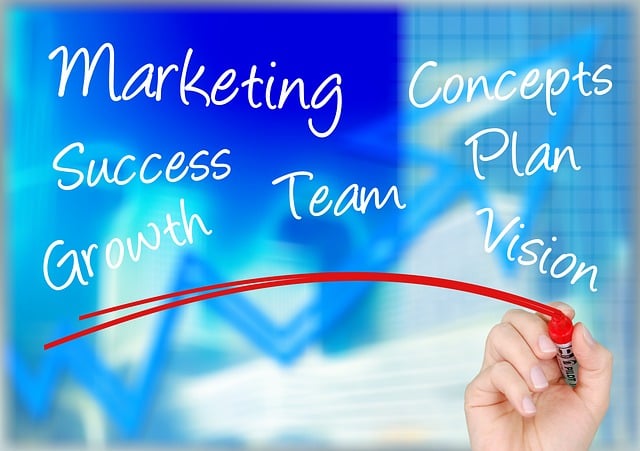Artificial Intelligence (AI) is transforming personalized marketing, especially with its application in AI-driven food photography optimization. This technology enhances product presentation by analyzing visual content based on customer preferences, trends, and cultural context. AI automates content creation, generating high-quality visuals tailored to specific demographics or micro-segments, thereby fostering stronger brand-consumer relationships and boosting customer satisfaction. Integrating AI-driven food photography offers businesses a scalable, high-quality solution in the competitive marketing landscape, capturing attention with dynamic, engaging content that predicts popular trends and keeps marketing materials relevant and appealing. To harness its power, start by collecting and annotating diverse food images to train an accurate AI model, choosing suitable tools and algorithms for image analysis, and regularly updating the system with new data.
“In today’s competitive market, personalized marketing is a game-changer, and Artificial Intelligence (AI) stands at its forefront. This article explores how AI transforms business strategies, particularly in the food industry. We delve into ‘Understanding AI’s Role in Personalized Marketing’ to uncover enhanced customer engagement tactics. Additionally, we highlight the impact of ‘AI-driven food photography optimization’, revolutionizing visual content strategies. Furthermore, a step-by-step guide is provided for brands aiming to build efficient AI systems, ensuring success in their marketing endeavors.”
- Understanding AI's Role in Personalized Marketing: Unlocking Customer Engagement
- The Impact of AI-Driven Food Photography: Enhancing Visual Content Strategy
- Building an Efficient AI System for Food Brand Success: Step-by-Step Implementation Guide
Understanding AI's Role in Personalized Marketing: Unlocking Customer Engagement

Artificial Intelligence (AI) is transforming personalized marketing, revolutionizing how businesses engage with their customers. By leveraging AI, brands can now create dynamic and tailored experiences at scale, making every interaction meaningful and relevant. At the forefront of this evolution is AI-driven food photography optimization, where advanced algorithms analyze visual content to enhance product presentation and personalization. This technology goes beyond basic image recognition; it understands customer preferences, trends, and cultural nuances, ensuring that marketing materials resonate deeply with target audiences.
The role of AI in unlocking customer engagement is multifaceted. It enables personalized recommendations based on individual browsing histories and purchase behaviors, thereby increasing the likelihood of conversions. Moreover, AI can automate content creation processes, generating high-quality visuals and copy tailored to specific demographics or even micro-segments within a broader audience. This level of customization fosters a stronger connection between brands and consumers, driving higher customer satisfaction and loyalty.
The Impact of AI-Driven Food Photography: Enhancing Visual Content Strategy

The rise of AI-driven food photography is transforming the way businesses approach their visual content strategy, particularly in the competitive realm of marketing. By leveraging advanced algorithms and computer vision techniques, AI systems can now create high-quality, personalized food images at scale, revolutionizing how brands showcase their products. This technology goes beyond simple image generation; it optimizes photography based on consumer preferences, cultural trends, and even individual dietary choices, ensuring each visual element resonates with the target audience.
In today’s digital era, where visuals dominate online content, AI-driven food photography offers a competitive edge. It enables businesses to create dynamic, engaging images that capture attention and drive engagement. With the ability to analyze vast datasets and understand consumer behavior, these systems can predict popular trends, ensuring marketing materials stay relevant and appealing. This personalized approach not only enhances brand image but also improves customer satisfaction by delivering content tailored to their unique tastes and needs.
Building an Efficient AI System for Food Brand Success: Step-by-Step Implementation Guide

To build an efficient AI system for food brand success, start by integrating AI-driven food photography optimization into your marketing strategy. Begin with data collection and annotation—gather a diverse set of high-quality food images and label them accurately to train your AI model. Next, choose the right AI tools and algorithms suited for image analysis and processing, focusing on features like color, texture, and composition. Train and validate your model using the annotated dataset, refining it until achieving optimal performance.
Once trained, integrate the AI system into your content creation workflow. Automate tasks such as selecting the best food images based on visual appeal and product relevance. Implement real-time feedback mechanisms to continuously improve the system. Regularly update and retrain the model with new data to adapt to changing trends and customer preferences. This step-by-step implementation guide ensures that your AI system not only enhances but also drives the success of your food brand through personalized marketing, capturing your audience’s attention in a competitive market.
AI is transforming personalized marketing, particularly in the food industry. By leveraging AI, businesses can create dynamic and tailored customer experiences, as demonstrated by the power of AI-driven food photography optimization. The strategies outlined in this article—from understanding AI’s role to building efficient systems—equip brands with tools to enhance visual content, capture audiences’ attention, and ultimately drive success. Embracing these AI business personalized marketing systems is key to staying competitive and meeting modern consumers’ expectations.
